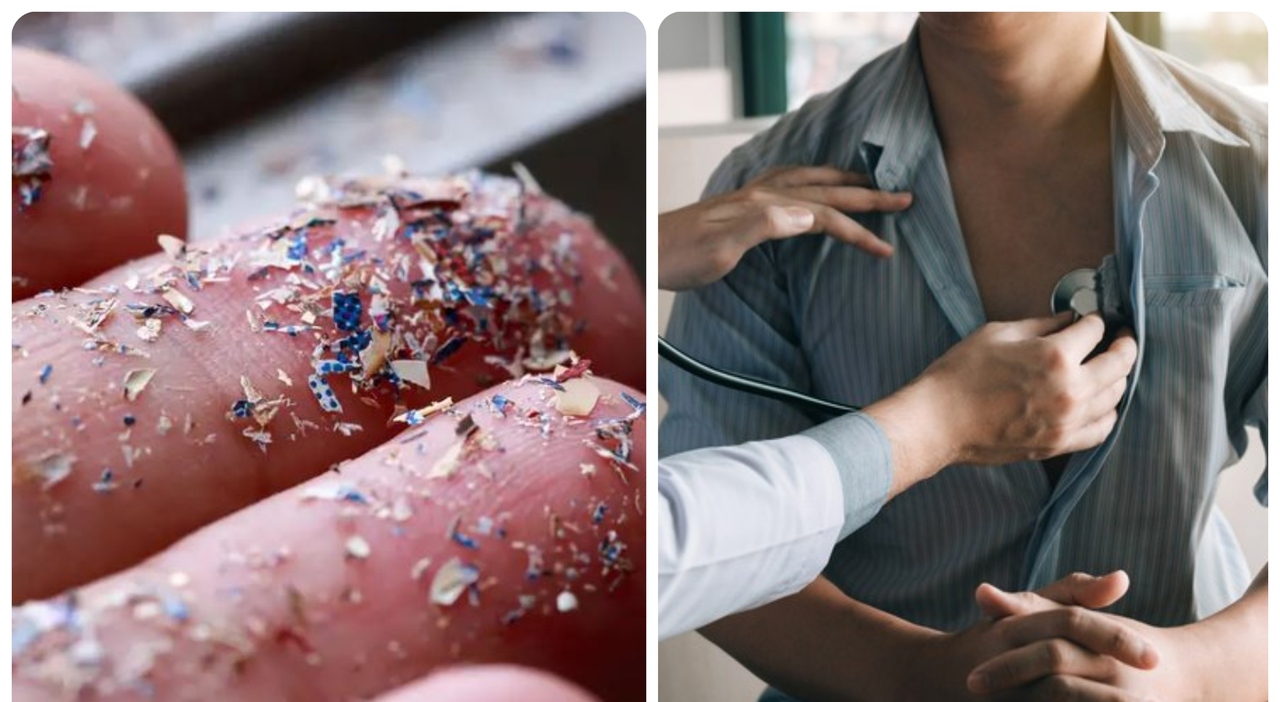Fragments of plastic materials in the plaques slow the passage of blood through the arteries and double the risk of heart attack. For the first time, the damage caused by micro and nanoplastics on human health has been scientifically proven thanks to an Italian study which identified the presence of plastics in the atherosclerotic plaques of the arteries. The effects are very serious: the percentage risk of heart attack and stroke was more than doubled. The study, conceived and coordinated by the University of Campania ‘Luigi Vanvitelli’ in collaboration with various bodies, is published in The New England Journal of Medicine which, in an editorial, defines the discovery as “revolutionary”. Revolutionary also because a significant part of what we eat and drink is contained in plastic.
INSIGHTS
The Harvard Medical School of Boston, the IRCSS Multimedica of Milan, the universities of Ancona, Sapienza of Rome and Salerno and the IRCSS INRCA of Ancona collaborated in the study. Microplastics have already been identified in various human organs and tissues, from the placenta to breast milk, from the liver to the lungs, including cardiac tissues. However, the Italian study reveals for the first time their presence even in atherosclerotic plaques, fatty deposits in the arteries dangerous for the heart, and above all provides unprecedented evidence of their danger. In fact, the data collected shows that atherosclerotic plaques ‘from pollution’ are more inflamed, therefore more friable and exposed to the risk of rupture with a more than 2-fold increase in the risk of heart attacks, strokes and mortality. The study involved 257 over 65s followed for 34 months after carotid endarterectomy, a surgical procedure to remove the plaques that block the vessels, then observed under the microscope to evaluate the presence of nanoplastics.
The analysis “demonstrated the presence of PE polyethylene particles at measurable levels in 58.4% of patients and of PVC particles in 12.5%”, declares Giuseppe Paolisso, coordinator of the study and professor of Internal Medicine at Vanvitelli. These are two of the most widely consumed plastic compounds in the world, used to make products ranging from containers to coatings, from films to building materials. Furthermore, the “pro-inflammatory effect could be one of the reasons why micro and nanoplastics lead to greater instability of the plaques and therefore a greater risk of them breaking, thus causing heart attacks or strokes”, explains Raffaele Marfella, creator of the study and professor of Internal Medicine at Vanvitelli. The study is accompanied by an editorial in the journal which defines the research as «a revolutionary discovery that raises a series of urgent questions: can exposure to microplastics be considered a new cardiovascular risk factor? How can we reduce exposure?”, writes epidemiologist Philip J. Landrigan, director of the Global Public Health Program at Boston College, who signs the editorial.
«The first step is to recognize that the low cost of plastic – is his analysis – is deceptive and that, in fact, hides great damage, such as the contribution of plastic to the outcomes associated with atherosclerotic plaque. We must encourage our patients to reduce their use of plastic and support the UN Global Plastics Treaty to mandate a global cap on plastic production.” According to the latest Future Brief report from the European Commission, on average an adult inhales or ingests from 39,000 to 52,000 plastic particles per year, equal to 5 grams of plastic per week, the equivalent of a credit card. Precisely the exponential increase in production is «the main cause of the worsening of damage from plastic – we read in the editorial -. Worldwide, annual production has grown from less than 2 million tons in 1950 to around 400 million today.”
It is above all the smaller plastic particles, specifies Antonio Ceriello of the IRCSS Multimedica in Milan, “that can penetrate deeply into the tissues, but numerous studies have also found larger particles”. «The quality of this study – concludes the Rector of the Vanvitelli University, Gianfranco Nicoletti – demonstrates once again how much our University has grown in recent years and what great development potential it has in the near future».
© ALL RIGHTS RESERVED
